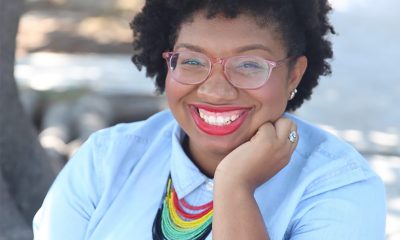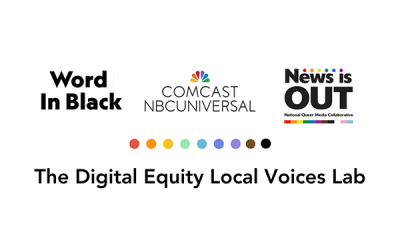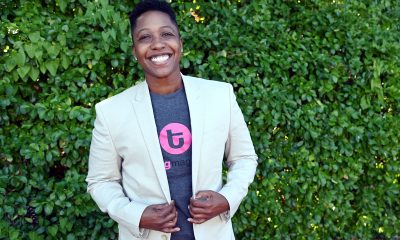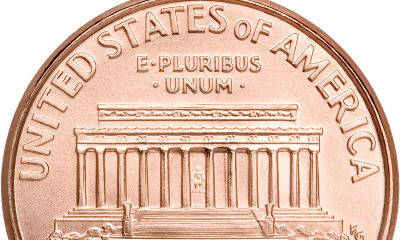Living
New year new you
Kickstart your image resolutions with our self-improvement guide
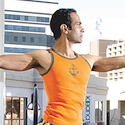
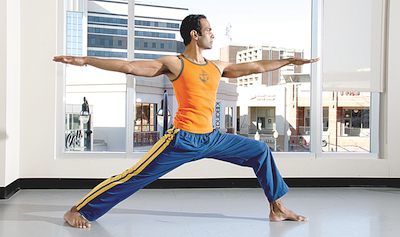
Daniel Phoenix Singh says keeping your workout gear handy helps you squeeze in quick exercise breaks when windows of time open up unexpectedly. (Blade photo by Pete Exis; special thanks to the Maryland Youth Ballet))
Lean locals share fitness tips
After the inevitable holiday excess, many among us are bemoaning the ab definition we lost after the eggnog and peanut butter balls. But fitness topics are not esoteric — we pretty much know what to do. It’s a matter of finding the motivation to do it. That’s where little tips and tricks can come in handy.
Maintaining Herculean abs and guns can take over your life but what about all those local LGBT folks who always look fit and trim no matter when you see them? We asked a few of them to share their favorite workout and diet tips in the hope that something will click for you.
“I am not a good example for eating,” says Scott Beard, a concert pianist. “Breakfast is usually coffee. I would say the best thing is to be in a regular workout routine. Make time for it. And mix up your workouts so your body is ‘surprised’ by new exercises. Also watch the alcohol intake. A beer is like drinking a loaf of bread.”
Brian Watson of Transgender Health Empowerment was one of those lucky few who managed to stay naturally thin without working out. But he just turned 30 and decided he could use some ab definition.
“Something I think helps is that I drink a lot of water,” he says. “Whenever I eat, I have a glass of water. I think that not only has that helped keep me thin, but healthy. It eliminates a lot of the sugar, caffeine, etc., that a lot of people put in their bodies everyday. I’m also one of those people who don’t mind taking the stairs instead of the elevator.”
Clark Ray of the Greater Washington Sports Alliance believes in moderation, structure and maintenance.
“Eat what you want but be sensible,” he says. “For structure, make a schedule and stick to it. And with maintenance, you have to be persistent. Work to maintain the personal achievement you’ve made and set goals for new desires and results.”
Realtor Evan Johnson is an avid runner. He runs 3.5 miles six days per week and augments it with 30-minute weight training exercises five-to-six days per week. He says working out very early — before the sun is up — works well for him.
Ebone Bell (Capital Queer Prom) lost 42 pounds over the past six months. She was going for a “slim and healthy look,” and achieved it by sticking to a low-calorie diet (less than 2,000 calories per day), going to the gym three-to-four times per week and balancing cardio and strength training.
“And don’t sleep on Zumba,” she says. “It’s a fun way to burn a lot of calories in just an hour.”
Lesbian Anya Maleknasri is a trainer at Gold’s Gym in Manassas and has several tips. She says finding a gym near work is better than home.
“If you’re driving toward the house, you’re more likely to pass it up for the couch,” she says. “But if it’s near your work, you’ll consider it still work time.”
She also suggests organic, grass-fed meats, healthy fats, nuts, vegetables and fruit.
“Our bodies were intended to eat,” she says. “Fat does not make you fat. Processed food and sugar makes you fat.”
Also, “workouts should be short and intense,” she says. “If it’s easy, it’s probably not going to create any change. But three-to-four days of 20-30 minutes of hard work with a clean diet and you will see change in only a few days. Staying fit and healthy is not a resolution. There are no quick fixes or special pills you can take. But everyday is a new start and there is no end point. Stay realistic and change your lifestyle and your health will turn into a life-long reality.”
Josh Bennett, a singer and dancer with the Gay Men’s Chorus of Washington — he’s the one they always put in the scantily clad attire since he’s so buff, says getting into a healthy routine is “an entire lifestyle change.”
“You have to be ready to change your diet and to push your body to new limits,” he says. “It’s never easy but the health rewards are great. The single biggest hurdle is motivation. It’s never easy to get off the couch and put down the chips but think of an event or person whom you want to look good for and post pictures of them on your phone/TV/computer or mirror. Use that motivator as a constant reminder to clear the junk food out of your kitchen and get on your feet.”
Kevin Platte, founder and director of the eternally shirtless D.C. Cowboys, advises healthful foods in smaller amounts.
“It’s all about portion sizes,” he says. “As we get older, we don’t need to eat like we did when we were teenagers. And remember — drinking a cocktail is like eating a dessert.”
He advises a solid exercise program with a special focus on abs.
Jerry Zremski, a gay D.C.-based reporter for the Buffalo News, finds it helpful to make fitness part of a daily routine. Working out at the same time each day helps him stick to a plan. He also eats meals at regular times and doesn’t snack.
“Consider hiring a trainer if you want to add muscle,” he says. “I did and it worked, even at my advanced age, which I am not revealing.”
His other favorite tip, which works great for D.C., is — “if your destination is less than a mile away, walk.”
Gay dancer Daniel Phoenix Singh (he has his own eponymous dance company), maintains his trim physique by augmenting the workout he gets from dancing with yoga, cardio and weight training. He’s also a vegetarian.
“I watch what I put in my mouth,” he says with a sly chuckle.
“Also be ready to work out any time,” he says. “I always keep my yoga mat, workout clothes and sneakers in my car so there is never an excuse. Because believe you me, I’m just like everyone else — I’d rather spend the evening watching YouTube videos if I could find an excuse to skip working out.”
— COMPILED BY JOEY DiGUGLIELMO
Freezing the fat
Achieve your New Year’s goal with safe, new procedure
By DR. KHALIQUE ZAHIR
The New Year brings many resolutions. Looking good is the first and most important one. Exercising and dieting can help, but there are some areas that won’t change, no matter how many Pilates classes you attend. The desire to look perfect can be frustrating, because you can only change so much on your own.
CoolSculpting by ZELTIQ is one of the non-invasive ways to reduce fat in targeted areas of the body that results in a natural-looking fat reduction in the areas treated. This method uses a cooling technology that targets fat cells through a process that does not harm the surrounding tissue. This procedure can reduce unwanted abdominal fat, love handles and back fat. It is performed in a dermatology office with a topical applicator that cools targeted fat cells under the skin. Only those areas targeted get fat reduction. All individuals can resume normal daily routines after the procedure. Patients may start to see changes as quickly as three weeks after their treatment, and will experience the most dramatic results after two months. The body continues to flush fat cells and will continue doing so for up to four months.
Some areas are not necessarily best suited for this freezing technique and are better handled with more immediate micro lipo-contouring procedures to remove bulges quickly. Identifying your specific needs is the most important thing, and can only be done after an evaluation. In many places, you can have a complimentary consultation with a cosmetic team. Some areas not suited for the Coolsculpting method are best treated using a tumescent lipo-contouring method. Many of these procedures can be performed with you awake and pain free in office, with minimal to no down time. Certain areas of the chest, neck and the abdomen respond best with this treatment and offer results within the first week.
Using the newer modalities in reduction of swelling and bruising has made outpatient body contouring popular and achievable for anyone with the challenges of unwanted body fat. Establishing a regimen best suited for your lifestyle needs with a board certified plastic surgeon is the first step toward succeeding in getting through the New Year’s resolution list. With all the newer innovative technology available, treat yourself to a procedure that can help you in your efforts to look as good as you can, quickly, effectively, and today.
In addition to getting the body you want this year, getting your skin in picture perfect condition is always right up there on the list. Smoother, softer, more even, unblemished and younger-looking skin are what people seek. There are so many things that can be done now to achieve the skin you want.
Lasers, combined with a good skin care regimen, can often solve almost any problem, or get you close to the desired result you’re looking for. Lasers can even out pigmentation, reduce redness, brighten, tighten, reduce and smooth out scarring, reduce or eliminate age spots, and much more. The most important thing when it comes to lasers it to go a dermatologist’s office, with board-certified dermatologists. Many states differ in their regulations on who can perform lasers, but you want to go to a dermatology practice if there is going to be someone performing lasers on your skin. Dermatologists see the skin differently than anyone else, and it is important for you to get someone who can look at your skin comprehensively, with an expert eye.
Dr. Khalique Zahir is with the Dermatology Center and Rockledge MedSpa with three Locations: Northwest D.C., Bethesda and Germantown. Visit dermskin.com or call 301-968-1200 for more information.

Did you melt like the Wicked Witch of the West this week?
As summer temperatures rise, keeping your home or apartment cool during a heat wave can become both a comfort issue and a financial challenge. One of the most effective ways to keep a home cool is to prevent heat from entering in the first place. Sunlight streaming through windows can significantly raise indoor temperatures. Consider the following solutions:
• Close blinds or curtains during the hottest parts of the day. Blackout curtains or thermal drapes can reduce heat gain by up to 30%.
• Install reflective window films to block UV rays and reduce solar heat without sacrificing natural light.
• Use outdoor shading solutions such as awnings (yes, the ones you removed because they were “dated”) and shutters to limit direct sunlight.
Fans are a cost-effective way to circulate air and create a wind-chill effect that makes rooms feel cooler.
• Ceiling fans should rotate counterclockwise in the summer to push cool air down.
• Box fans or oscillating fans can be placed near windows to pull in cooler evening air or push hot air out.
• Create a cross-breeze by opening windows on opposite sides of your home and positioning fans to direct airflow through the space.
• For an extra cooling effect, place a bowl of ice or a frozen water bottle in front of a fan to circulate chilled air.
To optimize natural ventilation, open windows early in the morning or late in the evening when outdoor temperatures drop. This allows cooler air to flow in and helps ventilate heat that built up during the day.
Appliances and electronics generate a surprising amount of heat. To reduce indoor temperatures:
• Avoid using the oven or stove during the day; opt for no-cook meals, microwave cooking, or grilling outside.
• Run heat-producing appliances like dishwashers and clothes dryers in the early morning or late evening.
• Unplug electronics when not in use, as even standby power can add heat to your space.
• Switching to energy-efficient LED lightbulbs can also reduce ambient heat compared to incandescent lighting.
If you do use an air conditioner, maximize its effectiveness by:
• Setting it to a reasonable temperature—around 76–78°F when you’re home and higher when you’re away.
• Cleaning or replacing filters regularly to maintain airflow and efficiency.
• Sealing gaps around doors and windows to prevent cool air from escaping. (Didn’t we all have a parent who said, “Close the door. You’re letting all the cool out?”)
• Using a programmable thermostat to optimize cooling schedules and reduce energy use.
If it is not cost-prohibitive, adding insulation in attics and walls can greatly reduce heat transfer. Solar panels that reflect heat can also help, as well as offset the cost of their installation. Adding weatherstripping around doors and windows, sealing cracks, and using door sweeps can make a significant difference in keeping heat out and cool air in.
Natural and eco-conscious methods can also help cool your home.
• Snake plants, ferns, or rubber trees can improve air quality and slightly cool the air through transpiration.
• White or reflective roof paint can reduce roof temperatures significantly.
• Cooling mats or bedding can make sleeping more comfortable without cranking up the A/C.
For renters or those who can’t make permanent modifications, there are still plenty of ways to keep cool.
• Use portable fans and A/C units instead of built-in systems, making sure they are the correct size for your space.
• Removable window film or static cling tinting can reflect heat without violating your lease.
• Install tension rod curtains or temporary blackout panels instead of hardware-mounted window coverings.
• Add draft blockers and weatherstripping tape that can be applied and removed without damage.
• Cover floors with light-colored rugs to reflect heat rather than absorb it.
• If allowed, use temporary adhesive hooks to hang reflective materials or light-filtering fabrics over windows.
Even if your space is warm, you can still take steps to help your body stay cool.
• Wear light, breathable fabrics like cotton or linen.
• Stay hydrated and avoid caffeine or alcohol during peak heat hours.
• Take cool showers or use damp cloths on your neck and wrists to bring your body temperature down.
Keeping your home or apartment cool in the summer doesn’t have to be expensive or energy-intensive. With a few adjustments such as blocking sunlight, optimizing airflow, using fans effectively, and making renter-friendly upgrades, you can create a more comfortable indoor environment while keeping energy bills in check.
Valerie M. Blake is a licensed Associate Broker in D.C., Maryland, and Virginia with RLAH @properties. Call or text her at 202-246-8602, email her at DCHomeQuest.com, or follow her on Facebook at TheRealst8ofAffairs.
Real Estate
The world’s on fire and D.C. is on sale (sort of)
Prices are up, but then again, nothing makes sense anymore

ICE is disappearing people, revered government agencies are shuttering, and who knows if we’ll be in World War III next week? But can you believe prices in D.C. are actually still up 6.3% since last year? It doesn’t make sense, and perhaps that does make sense, because nothing seems to make any sense any more.
That said, there are some parts of our market that are truly suffering. The interest rates, which have been up, up, up for about four years now, are the ongoing rain on our market’s military parade. Combine that with 75,000 federal employees taking a buyout nationwide, and DOGE cuts eliminating around 40,000 federal jobs in the District (per estimates by the D.C. CFO), not to mention thousands of other job losses in non-governmental organizations due to funding and program cuts, and you’ve got a case of uncertainty, and downright unaffordability in the pool of otherwise would-be buyers.
This has had a marked impact on properties that starter-home buyers and low- to mid-level employees would otherwise buy, most notably condominium and cooperative apartment units. These properties have already slowed in our market thanks to the profound impact that higher interest rates have had on their monthly carrying costs—pair that with job insecurity, and a lot of condos are proving to be very difficult to sell indeed.
So how is the average sale price up in our market?
The increase is almost entirely due to the resounding strength of the single-family home market, especially in upper Northwest D.C., where it is still quite common to see bidding wars, even on properties pushing past the $3M mark. It seems that buyers in that echelon are less impacted by a few percentage points in the interest rate, and less concerned about their job security. Notably, those buyers are often married with children and have an absolute need for more space, must stay in the area due to one spouse’s job, or the kid’s friend group, regardless of whether the cost of owning is thousands of dollars more per month than it would have been in 2020 or 2021. The continued appreciation in these neighborhoods defies imagination.
So, what to do if you are not one of those lucky enough to be shopping for a $3M home? The short answer: wait. If you want more space, rent your current place out and learn the joys of being a landlord while someone else pays your mortgage. Need the equity from your current home to buy your next place? Get a home equity line of credit, or loan, and pull the equity out of your current place to buy the next one. Or—and I have never recommended this before in 21 years of being a Realtor—rent for a few years. Sure, I’d love to list and sell your condo so you can climb the real estate ladder, but it might just be a waste of time, money or both if you could just ride out this storm and sell in a DOGE-less future.
All this said, there are some condos that seem to be immune from this recent negative news. Anecdotally, it feels like it’s the truly special ones that do just fine no matter the market. Our recent listing in Capitol Hill had a view from every one of its 15 windows of the Supreme Court. Sold in five days with six offers. Another condo was on the top two floors of a townhouse and had the coolest black wood floors that gleamed like a grand piano. Sold in four days at full price.
So, all is not for naught if you have a condo or home in an area that people want to be in, with nice space, light, amenities and a certain je ne sais quois. And, as long as we have a democracy in a few years, my experience says our market will be back, stronger than ever, really soon.
David Bediz is a Realtor and mortgage loan broker for the Bediz Group LLC and Home Starts Here, LLC. Reach him at [email protected].

In this corner, there’s the Genesis QV70, newly updated and full of glitzy gizmos. And in the opposing corner, there’s the Lexus NX, a fan fave known for comfort and reliability.
Both are strong contenders. Both have proven to be equally adept at bobbing and weaving through traffic. And both can go toe to toe with pricier competitors.
And yet, what would happen when they sparred against each other? Here’s your ringside seat to find out.
GENESIS QV70

$50,000
MPG: 22 city/28 highway
0 to 60 mph: 5.9 seconds
Cargo space: 28.9 cu. ft.
PROS: Stylish. Good value. Lots of standard amenities.
CONS: So-so fuel economy. Quirky dash controls.
IN A NUTSHELL: When it comes to speed, the Genesis QV70 is faster on its feet than the Lexus NX. Neither of these crossover SUVs is a lightweight, but the QV70 offers more potent powerplants—including an all-electric version that zips from 0 to 60 mph in just 3.8 seconds. In other words, Porsche Macan S territory.
The two gas-powered options—a four-cylinder turbo and twin-turbo V6—also got my blood pumping. So did the velvetlike suspension mixed with deft handling and stop-on-a-dime braking. But this adrenaline rush comes at a cost: sacrificing fuel economy.
As for the automaker’s design philosophy—“athletic elegance”—it’s on full display here: an oversized grille inspired by the Genesis emblem, the dramatically arcing silhouette, and those distinct quad headlights and taillights. It’s not easy to stand out when 25% of all vehicles sold in the U.S. are compact crossovers, so kudos to the QV70 for being such a head-turner.
The mod-yet-minimalist styling carries over to the cabin, with its high-quality materials: real-wood accents, soft-touch plastics and a tasteful glass shift knob. New this year is a sweeping 27-inch dashboard monitor, which houses the gauge cluster and infotainment touchscreen. Alas, this display is positioned a bit far from the driver (though I must admit reaching for it did help stretch a few tight back muscles).
Instead of being a costly extra, this gigantic monitor comes standard. So do synthetic leathers seats, nine-speaker stereo, smartphone/wireless connectivity, hands-free liftgate, tons of safety gear and more. Options include a panoramic sunroof, three-zone climate control, 16-speaker Bang & Olufsen audio, synthetic suede headliner, sound-reducing rear windows, automated parking and other goodies.
What’s the score so far? Despite some minor quibbles, the Genesis QV70 is a worthy challenger that pulls no punches.
LEXUS NX

$43,000
MPG: 26 city/33 highway
0 to 60 mph: 8.2 seconds
Cargo space: 22.7 cu. ft.
PROS: Fuel efficient. Comfy seats. Rock-solid reliability.
CONS: Pokey base model. Limited rear storage.
IN A NUTSHELL: Sure, the Lexus NX isn’t as speedy as the Genesis QV70. But, as with the tortoise and the hare, sometimes slow and steady wins the race. And really, it’s only the entry-level NX that feels sluggish, such as when trying to quickly merge into freeway traffic.
Other trim levels, including two hybrid options, are just fine. And no matter the engine choice, the counterpunch here is that these vehicles get better gas mileage: 20% higher fuel economy than in either the four-cylinder or V6 in the Genesis. The two NX hybrids are even more green, with the high-end plug-in version able to travel up to 37 miles on electric power alone. One downside: There is no all-electric NX—well, at least not yet.
As with parent-company Toyota, Lexus offers stellar vehicle reliability—often ranked No. 1 in dependability and crash-test surveys year after year. Lexus vehicles generally hold their value better than Genesis, because this newer brand has a shorter history. Lexus also has a larger dealer network, though the number of Genesis dealerships is growing.
But when it comes to cargo space, the NX is about two inches shorter and narrower than the QV70, which has more stowage area. And Genesis handling is sportier, though the Lexus feels sure and well-grounded.
Luxe interior amenities are basically the same in both vehicles. But interior styling in the QV70 is trendy, while the NX is more understated. In other words, a choice between sassy and classy.
This is a very competitive vehicle segment, with Euro models like the Audi Q5, BMW X3 and Mercedes GLC also duking it out in what seems like a clash of the titans.
But as for the Genesis QX70 or Lexus NX, which is the winner? For me, both are real knockouts—so I’d call it a draw.

